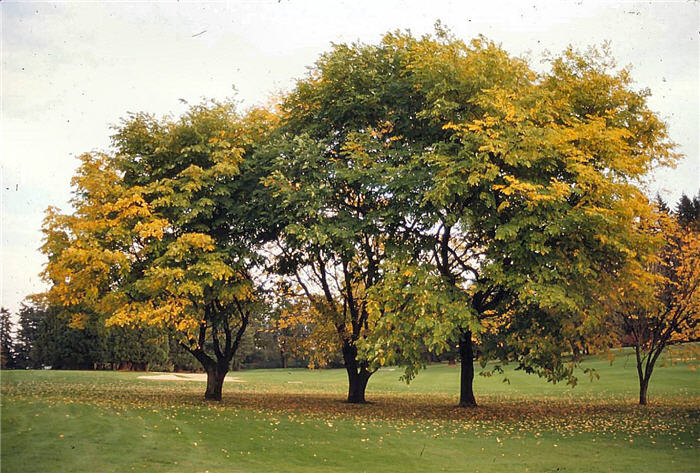| Botanical Name: Cladrastis kentuckea | |
| Common Name: Yellowwood |

-
Anatomy
-
Culture
-
Design
Plant Type
Tree
Height Range
25-40', 40-60'
Flower Color
White
Flower Season
Spring
Leaf Color
Green
Bark Color
Grey
Fruit Color
Brown
Fruit Season
Summer, Fall
Sun
Full
Water
Medium
Growth Rate
Moderate, Slow
Soil Type
Clay, Loam, Rocky
Soil Condition
Average, Rich, Poor, Well-drained
Soil pH
Neutral, Basic
Adverse Factors
n/a
Design Styles
English Cottage, Formal, Ranch, Woodland
Accenting Features
Fall Color, Fragrance, Showy Flowers
Seasonal Interest
Spring, Summer, Fall
Location Uses
Background, Entry, Lawn, Patio
Special Uses
Screen, Shade Tree, Small Spaces
Attracts Wildlife
n/a
Information by: Stephanie Duer
Photographer:
Photographer:
-
Description
-
Notes
Yellowwood is a deciduous tree of the legume family which features a broad, rounded crown; slow growing 30 to 50 feet tall and wide. Pinnately compound leaves open yellowish green, turn bright green in summer, and then yellow in fall. May not flower for the first 8-10 years, but once the bloom begins, it can be spectacular. Intensely fragrant, wisteria-like, white flowers in large, drooping panicles (10-15" long) will virtually cover a mature tree in late spring (profuse bloom in alternate years). Flowers give way to flat, brown seed pods (2.5-4" long) which mature in September thru October. Wood of this tree contains a yellow dye which distinctively colors the heartwood and gives rise to the common name.
Grow in well-drained soil in full sun; best growth in organic soils. Tolerates high pH soils. Prune in summer only because cuts made in winter or spring tend to bleed considerably. Hardy to USDA Zone 4.
Excellent, low-maintenance, small shade tree for residential landscapes, particularly on smaller properties. Also useful near patios and terraces. Roots go deep, so other plants may be easily grown underneath.
Cladrastis lutea and Cladrastis kentuckea are synonymous.